|
The material on this website is intended for educational use only and may not be reproduced for commercial purposes without express permission from the appropriate copyright holder.
Le contenu de ce site Web est destiné à des fins pédagogiques seulement et ne peut être reproduit à des fins commerciales à moins d'en avoir obtenu la permission du titulaire du droit d'auteur approprié.
"The Euro-American nations held up civilization (singular), Christianity and commerce as universal aspirations, engines of history and progress that every society must strive for. [this justified European expansion, dispossession and the 'civilizing mission' of schools]."
Catherine Larochelle
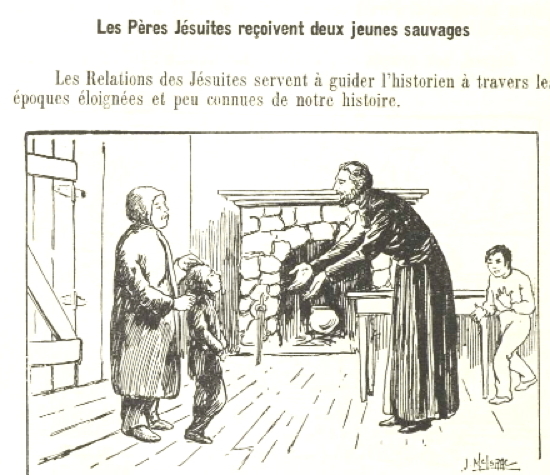
Elie de Salail 366 Anniversaires, Elie de Salail 366 Anniversaires,
21 December 1632
The Jesuit Fathers receive two young savages. The Jesuit Relations serve to guide the historian through the distant and little-known periods of our history.
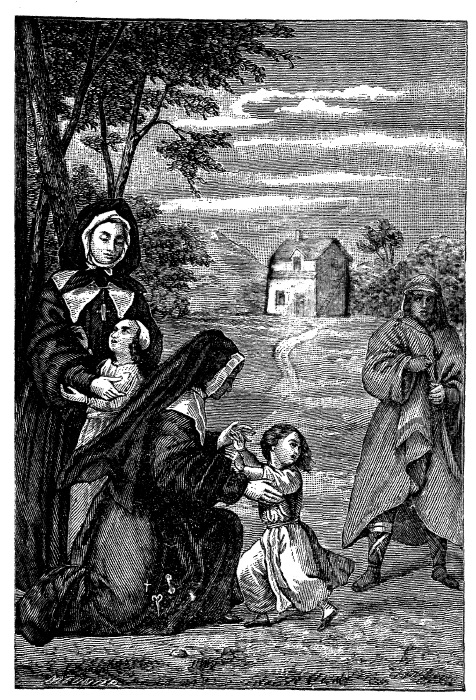
"A small savage girl leaves her mother and throws herself into the arms of sister of the congregation [Marguerite Bourgeoys, founder of a school in 1658], Lecture à baue
voix . . ."
Cours élémntaire, 1895 reproduced in School of Racism.
"Out of a hundred that have passed through our hands scarcely have we civilized one. We find docility and intelligence in them, but when we are least expecting it they climb over our enclosure and go to run the woods with their relatives, where they find more pleasure than in all the amenities of our French houses. Savage nature is made that way; they cannot be constrained and if they are they become melancholy . . . Besides, the savages love their children extraordinarily and when they know that they are sad they will do everything to get them back."
Mother de l'Incarnation
"Several of our young people were formerly brought up at the colleges of the Northern Provinces; they were instructed in all your sciences; but when they came back to us, they were bad runners, ignorant of every means of living in the woods; unable to bear either cold or hunger; knew neither how to build a cabin, take a deer or kill an enemy; spoke our language imperfectly; were therefore neither fit for hunters, warriors or counselors; but they were totally good for nothing. We are however not the less obliged by your kind offer, though we decline accepting it. And to show our grateful sense of it if the Gentlemen of Virginia will send us a dozen of their sons, we will take great care of their education, instruct them in all we know and make men of them."
Red Jacket, 1744 [quoted in Indian Education in Canada]
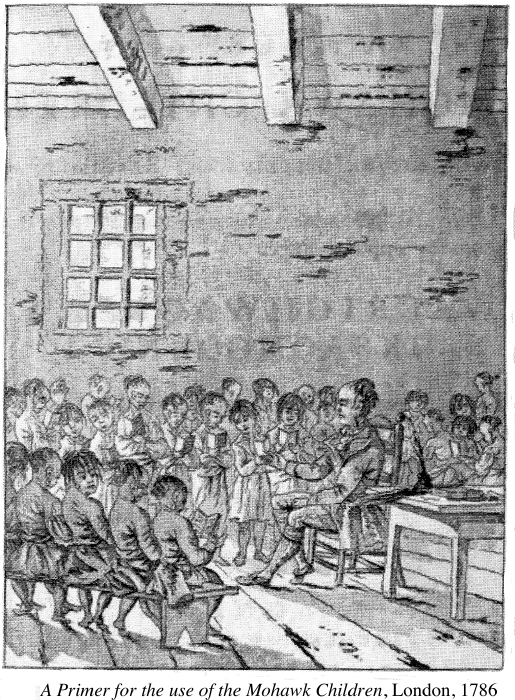
"In 1847, Egerton Ryerson, the superintendent of schools for Upper Canada, recommended the establishment of residential schools in which Aboriginal students would be given instruction in "English language, arithmetic, elementary grammar, or knowledge of forms, geography and the elements of general history and agricultural chemistry, writing, drawing and vocal music, book-keeping (especially in reference to farmers' accounts), religion and morals." This he thought of as "a plain English education adapted to the working farmer and mechanic. In this their object is identical with that of every good common school."
A Knock on the Door, The Essential history of Residential Schools
"A great cause of Indian improvement [in education is] our only hope to prevent our race from perishing and to enable us to stand on the same ground as the white man."
Chief Paulus Clause of the Bay of Quinte, 1846
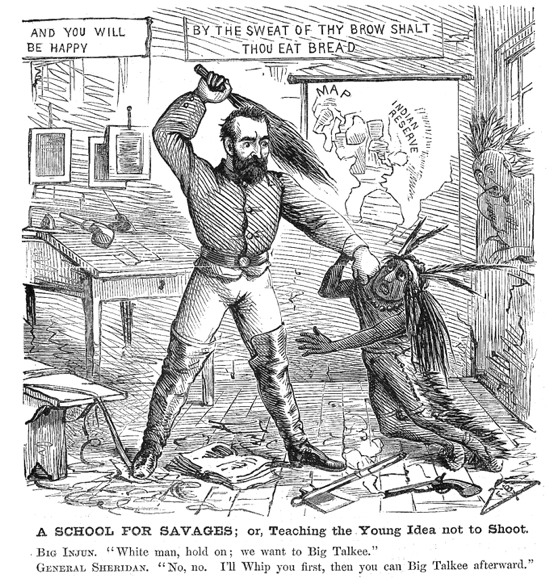
Harper's Weekly, 16 January 1869
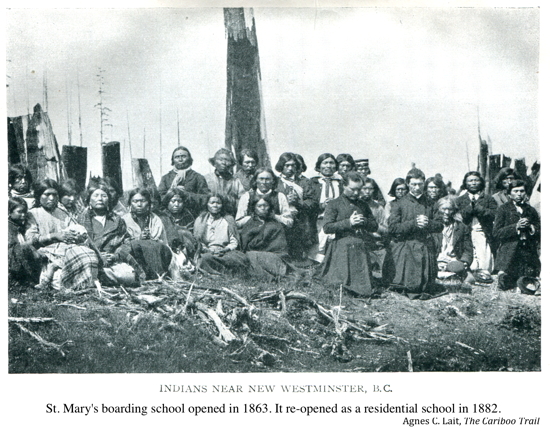
"91. It shall be lawful for the Queen, by and with the Advice and Consent of the Senate and House of Commons, to make Laws for the Peace, Order, and good Government of Canada. . . it is hereby declared that . . . the exclusive Legislative Authority of the Parliament of Canada extends to. . . 24. Indians, and Lands reserved for the Indians."
Section 91 (24) of the British North America Act
"And further, Her Majesty agrees to maintain a school on each reserve hereby made whenever the Indians of the reserve should desire it."
Treaties 1 and 2 between her majesty the Queen and the Chippewa and Cree Indians
of Manitoba, August 1871
"It is no longer possible to tell the Canadian story without referring to the cultural genocide endured by First Nations for over a century following the Indian Act of 1876."
Dominic Hardy, Annie Gérin and Lora Carney
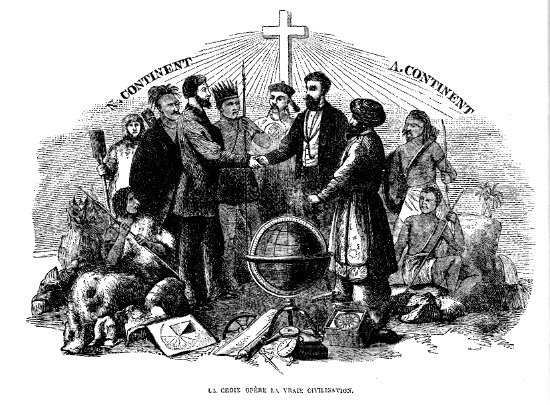
LA CROIX OPÈRE LA VRAIE CIVILIZATION
THE CROSS BRINGS ABOUT TRUE CIVILIZATION
Nouvelle géographie illustrée à l'usage des ècoles chrétiennes de la puissance du Canada, Montréal.
"The industrial school is the principle feature of the policy known as that of 'aggressive civilization.' . . it was found [in the Unites States] that the day-school did not work because the influence of the wigwam was stronger than the influence of the school. Industrial boarding schools were therefore established . . . if anything is to be done with the Indians we must catch him very young. The children must kept constantly within the circle of civilized conditions. . . The first and greatest stone in the foundation of the quasi-civilization of the Indians, wherever seen, was laid by missionaries. "
Nicholas Flood Davin, Report on Industrial Schools for Indians and Half-breeds,
Ottawa, 1879
[The Carlisle Indian Industrial School in the United States opened in 1879 and operated for nearly 30 years with a mission to “kill the Indian” to “save the Man.” This philosophy meant administrators forced students to speak English, wear Anglo-American clothing, and act according to U.S. values and culture. This is the model school copied by Davin.]
"Next summer, or at latest next fall, the railway will be close to us, the whites will fill the country, and they will dictate to us as they please. It is useless to dream that we can frighten them; that time is past; our only resource is our work, our industry, and our farms. Send your children to school . . . if you want them to prosper and be happy."
Chief Poundmaker
“When the school is on the reserve, the child lives with its parents, who are savages, and though he may learn to read and write, his habits and training mode of thought are Indian. He is simply a savage who can read and write. It has been strongly impressed upon myself, as head of the Department, that Indian children should be withdrawn as much as possible from the parental influence, and the only way to do that would be to put them in central training industrial schools where they will acquire the habits and modes of thought of white men."
Sir John A. Macdonald, 1879
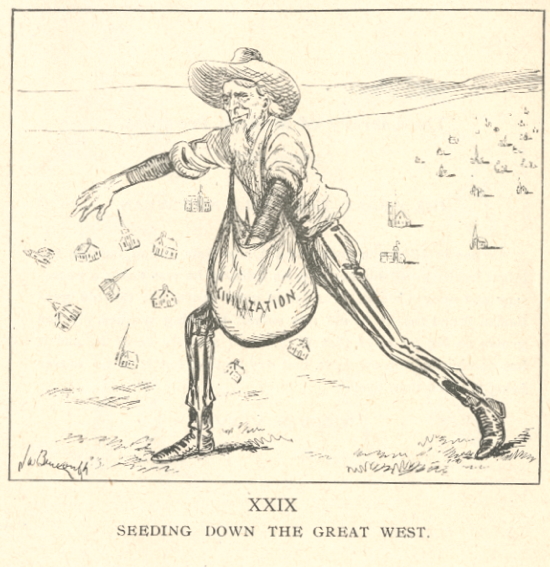
Here is Uncle Sam sowing his great western farm with churches, schools and colleges – the seed that has produced the crop of liberty and civilization.
J. W. Bengough, Library of Modern Progress Cartoons, Toronto, 191?.
"If these schools are to succeed, we must not have them too near the bands; in order to educate the children properly we must separate them from their families. Some people may say that this is hard, but if we want to civilized them we must do that."
Cabinet minister, House of Commons, 1883
“The fact is if you wish to educate these children you must separate them from their parents during the time that they are being educated. If you leave them in the family they may know how to read and write, but they still remain savages, whereas by separating them in the way proposed, they acquire the habits and tastes — it is to be hoped only the good tastes — of civilized people.”
Sir Hector-Louis Langevin, 1883
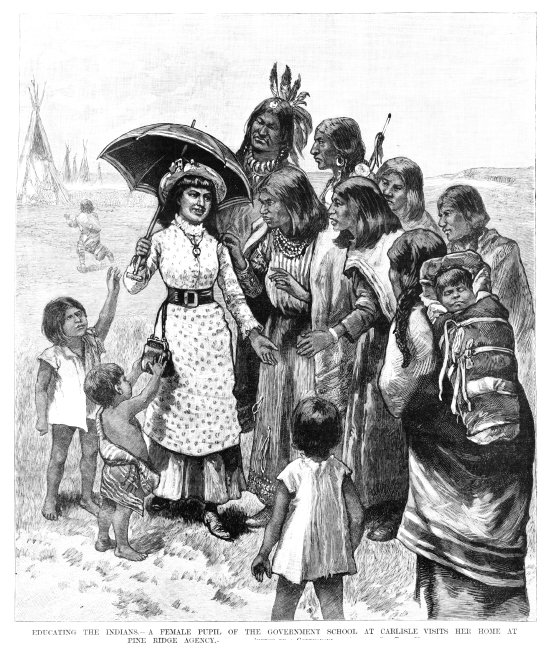
EDUCATING THE INDIANS – A FEMALE PUPIL OF THE GOVERNMENT SCHOOL AT CARLISLE VISITS HER HOME AT PINE RIDGE AGENCY.
Frank Leslie's Illustrated Newspaper, 15 March 1884, LC90712911
"Indian Affairs translator and student recruiter Jean L'Heureux, who worked for the Roman Catholic schools in Alberta, was accused, many times, of sexually abusing the boys in his care. No criminal investigation took place. From early on, the pattern was set. Schools and churches covered up the abuse. Principals did nothing about complaints. Neither did the police. And schools never told the parents what was going on."
Tanya Talga, Seven Fallen Feathers
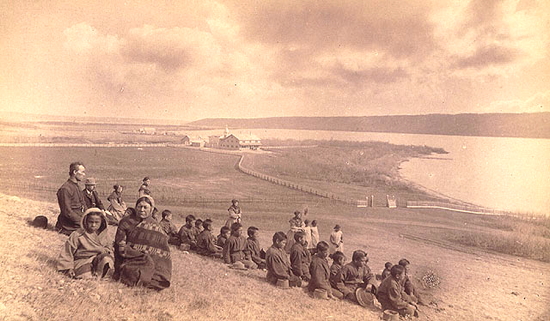
Students and family members, Father Joseph Hugonnard, Principal, staff and Grey Nuns on a hill overlooking the Fort Qu'Appelle Indian Industrial School, Lebret, Saskatchewan, May 1885. Étudiants et membres de la famille, le directeur Père Joseph Hugonnard, le personnel d'école et les Soeurs Grisesue sur une colline qui surplombant le Pensionnat indien (école des métiers) de Fort Qu'Appelle, Lebret (Saskatchewan), mai 1885. LAC PA-118765, Oliver Buell, May 1885
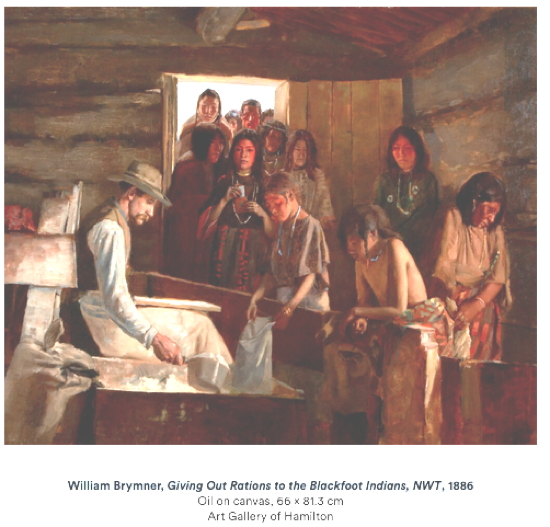
"The great aim of our legislation has been to do away with the tribal system and assimilate the Indian people in all respects with the other inhabitants of the Dominion as speedily as they are fit to change.”
John A Macdonald
"The Dominion has done very well by its Indians, of whom it has a hundred thousand. It has tried to civilize them by means of schools, missions and farm instructors."
Charles Dudley Warner, Studies in the South and West, 1889
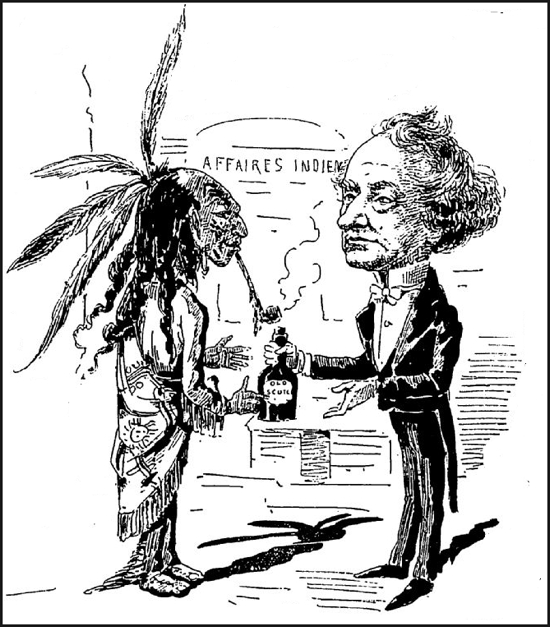
NOS BONS MINISTRES D'OTTAWA
La Vie Illustrée, (Illustrious Life), Montréal, 11 May 1889
[Sir John A. Macdonald was the minister in charge of Indian Affairs for over nine years from 1878-1888]
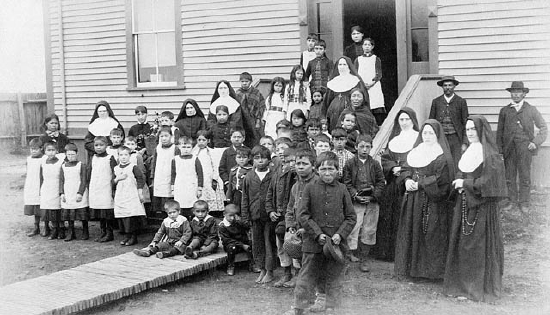
A group of nuns with Aboriginal students. Groupe de religieuses et d'élèves autochtones. H.J. Woodside / Library and Archives Canada / PA-123707, ca. 1890.
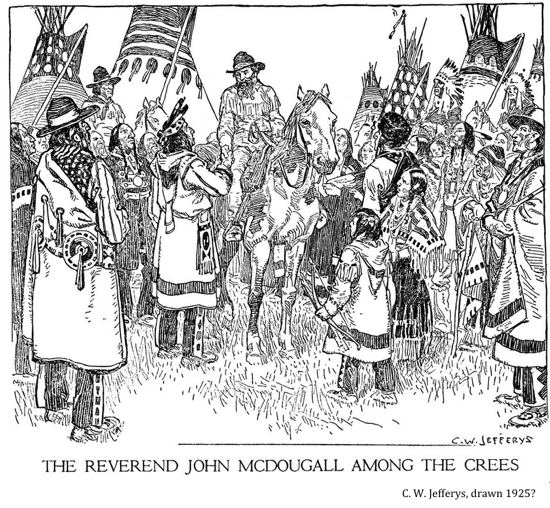
"How would we white people like it if because we were weak, and another people more powerful than ourselves had possession of our country, we were obliged to give up our children to go to schools of this more powerful people–KNOWING that they were taken from us for the very purpose of weaning them from the old loves and the old associations–if we found that they were most unwillingly allowed to come back to us for the short summer holidays; and when they came were dressed in the peculiar costume of our conquerors, and were talking their language instead of the dear old tongue."
Fair Play [Edward Wilson], The Canadian Indian, March 1891
Edward Wilson was the missionary principal of a residential school at Sault Ste. Marie from 1873 to 1893. Like other schools at the time, the school used force to assimilate Indian children into western culture. Unlike other educators at the time, Wilson came to have grave doubts about the policy. He came to admire many features of native culture and promoted native autonomy. He published his ideas under the pen name Fair Play in The Canadian Indian in March 1891.
"All the actions of our Government, of our Indian Department, of our educational missions, even the organization and carrying on of our Christian missions, are from the white man's stand-point. The Indian is not asked whether he prefers living on an Indian reserve to roaming the country . . . whether he is to retain his language and the customs of his forefathers, or to give them up. . . They are simply one after another forced upon him. . . Is there nothing––nothing whatever––in the past history of this ancient people to merit our esteem, or to call forth our praise? Were there no great minds among their noted chiefs? Do the ruins of their ancient cities show no marks of intelligence, energy or perseverance, in the people that planned and constructed them? While taking steps to preserve their ancient relics in our museums, and while studying their past history and their many and diverse languages, were it not well, as a matter of justice and Christian kindness to them, as well as out of respect for their past and but little-understood history, to allow them to preserve their own nationality, and, under certain restrictions, to enact their own laws? Would it not be pleasanter, and ever safer to us, to have living our midst a contented, well-to-do, self-respecting, thriving community of Indians, rather than a set of dependent, dissatisfied, half-educated and half-Anglicized paupers?"
Fair Play [Edward Wilson], The Canadian Indian, March 1891
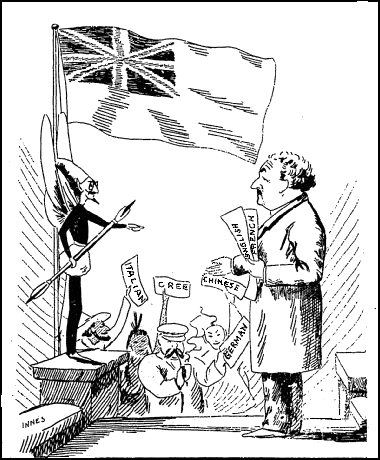
GOV. ROYAL: Mr. Prairie, this is most distracting, what shall I do?
OUR FAMILIAR: Why, Your Honor, point to the British Flag and
tell them this is an English speaking community and they must
yield to circumstances.
HIS HONOR: Ah! My friend, obvious reasons make such a course
irresistible.
The Prairie Illustrated, Calgary, 11 April 1891
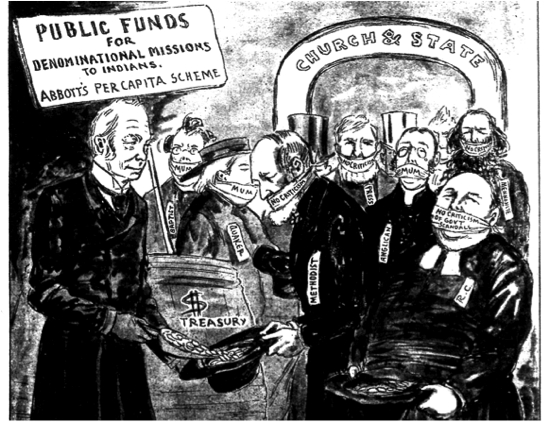
BOODLE FOR THE CHURCH, NEXT!
Premier Abbott, replying to a Methodist Deputation which asked for an appropriation of Public Money for Methodist Missions to the Indians of the North-West, said that the Government were maturing a scheme for granting State Aid to Denominational Missions on a per capita basis. This is what we expect to see shortly.
[PUBLIC FUNDS FOR DENOMINATIONAL MISSIONS TO INDIANS. ABBOTT'S PER CAPITA SCHEME. CHURCH & STATE, Mum, Mum, No Criticism , No Criticism of Gov't Scandals, Mum, No Criticism. Baptist, Quaker, Methodist, Anglican, Roman Catholic, Mennonite, $ Treasury, Canada's Barrel].
J. W. Bengough, Grip, Toronto, 4 June 1892
[Initially, the federal government covered all the costs of operating the industrial schools. In 1891, this policy was abandoned in favour of one by which schools received a fixed amount per student (referred to as a 'per capital grant'). (This encouraged principals to accept students who were too young or too sick and ultimately in severe underfunding of schools.)]
Final Report of the Truth and Reconciliation Commission of Canada, Volume 1

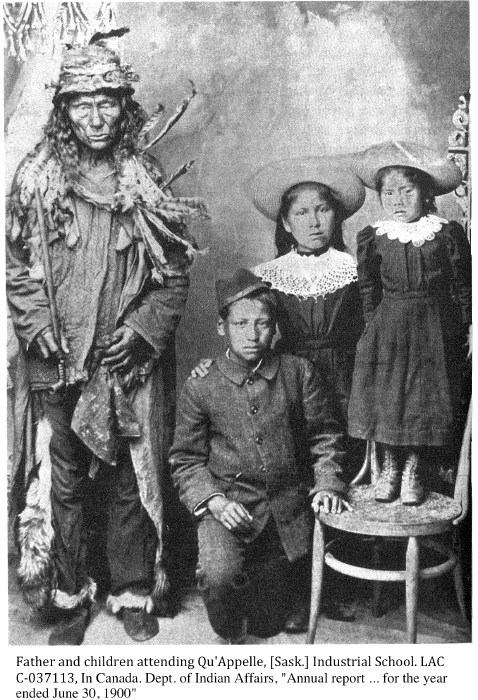
"I ran away four times [from a residential school] because the Sisters and Fathers did not treat me good; they gave us bad food which was only fit for pigs, the meat was rotten, and had a bad smell and taste . . . when I did not eat it they gave it to me again for the next meal . . . They would sometimes lock me in a room and make me kneel down for half an hour or an hour. They once kept me locked up for a week. . . . They sometimes stripped me and whipped me."
Sworn information of Ellen Charlie at an inquest into the death of a child who ran away from the school, Alkali Lake, B. C., 18 February 1902

"Our children are not strong. Many of them are sick most of the time, many of the children sent from this Reserve to the Schools have died." [High death rates led many parents to refuse to send their children to residential schools and lobbied for reserve schools.]
Kah-pah-pah-mah-am-wa-ko-we-ko-chin, 1897
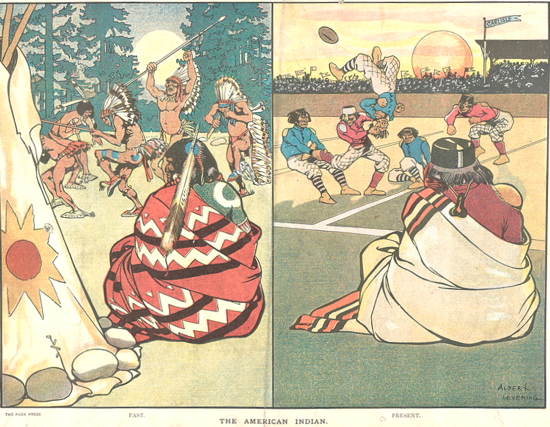
Puck, New York, 28 November 1906 (Carlisle)

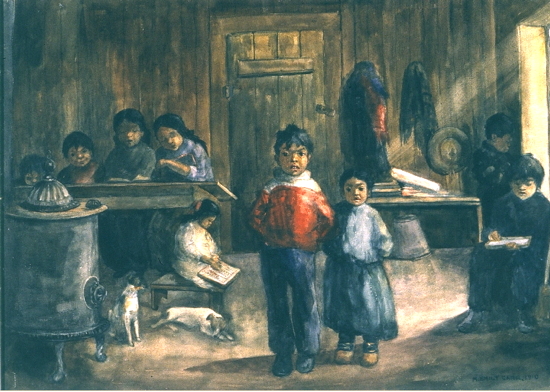
Emily Carr, An Aboriginal School House, Lytton, B.C., M22155
"I want to get rid of the Indian problem. I do not think as a matter of fact, that this country ought to continuously protect a class of people who are able to stand alone. That is my whole point. Our objective is to continue until there is not a single Indian in Canada that has not been absorbed into the body politic, and there is no Indian question, and no Indian Department. . ."
Duncan Campbell Scott, Head of Canada's Department of Indian Affairs
from 1913 to 1932

Unidentified group except for Archibald Lampman (in hat) and Duncan Campbell Scott. Groupe de personnes non identifiées, sauf en ce qui concerne Archibald Lampman (coiffé d'un chapeau) et Duncan Campbell Scott. LAC Jarvis/Harry Orr McCurry/Library and Archives Canada/C-056072, 1906?
[In the early 20th century, Duncan Campbell Scott was a prominent Canadian poet. He was also Deputy Superintendent of Canada's Department of Indian Affairs. This "Confederation Poet" is a controversial figure. Scott's poetry celebrates the Canadian wilderness and Canada's First Peoples. However, he is also responsible for implementing assimilation policies and forcing Aboriginal children to attend residential schools. ]
"It is readily acknowledged that Indian children lost their natural resistance to illness by habituating so closely in these schools, and that they die in a much higher rate than in their villages. But this alone does not justify a change in the policy of this Department, which is being geared towards the final solution of our Indian Problem [assimilation]"
Duncan Campbell Scott
"It [residential school education] includes not only a scholastic education, but instruction in the means of gaining a livelihood from the soil or as a member of the industrial mercantile community, and the substitution of Christian ideals of conduct and morals for aboriginal concepts of both."
Duncan Campbell Scott
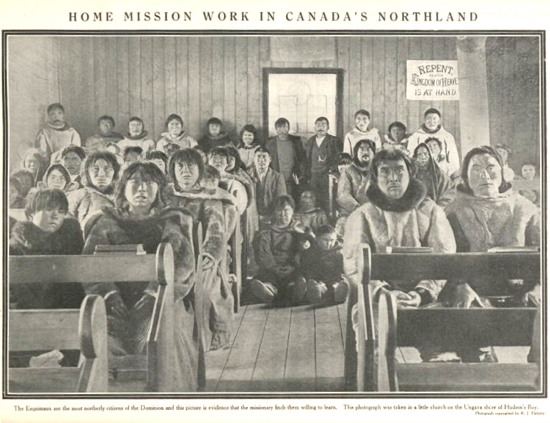
The Canadian Courier, Toronto, 11 October 1911

Tuberculosis, National Child Welfare Association, New York, 1920, LC2014647541
"Once parents understood the realities of the residential school system . . . that by attending their children would suffer emotional, mental, spiritual, sexual, and/or physical abuse [they kept their children at home]. How was the government to respond to this defiance? The answer was to make school attendance compulsory. The 1920 Indian Act amendment gave the Indian Agent the power to simply walk into a house in a community and kidnap the children living there . . . Often these abductions would take place with the help of law enforcement. Parents who tried to shield their children from inevitable pain risked imprisonment."
David A. Robertson
"The government was well aware of the extreme death rates associated with rampant spread of tuberculosis in the institutions as they own study, conducted by Dr. Peter Henderson Bryce, confirmed and condemned the deplorable conditions and the resulting death rates. Nonetheless, Canada refused to make the necessary changes to stem the tide of tuberculosis infection, knowing full well the children were dying at rates as high as 50 per cent in some schools."
Michelle Good, Truth Telling

This stained glass window is found in Brantford, Ontario, on Six Nations territory. It was dedicated to Susan Hardie, a part Aboriginal teacher, who had attended the Anglican-run residential school as a child, by former students in 1960. She taught at the school for 50 years and was known as one of the kinder staff members.
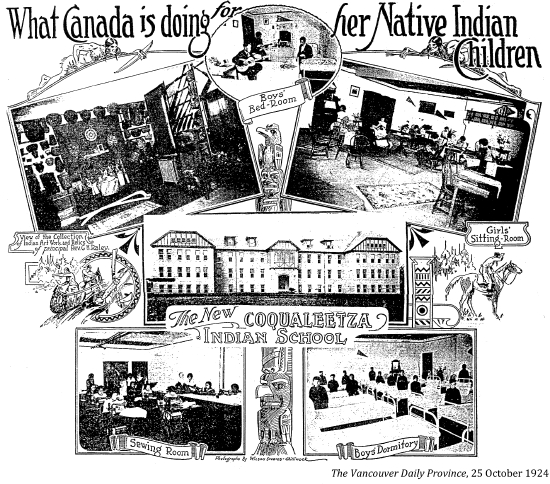
"How could citizens from 'the true north strong and free' possibly allow prime minister after prime minister (and don't forget the pope), to oversee the perpetuation of this systematic cultural genocide on thousands of Native kids? It was a national crime, a human rights violation, and government cover-up at the highest level. . . I take a very personal interest in how the Canadian and American governments legalized the tormenting, abuse, and killing of Native children. This legislation caused intergenerational grief, alcoholism, hatred, mistrust, and community and family breakdown in Native communities across the continent, which persists to this day. . . I run out of fingers when I count my family members and close relatives who became alcoholics, committed suicide, or have done serious jail time. What kind of a people, what kind of a country, could allow this?"
Chief Clarence Louie, 1924, Rez Rules
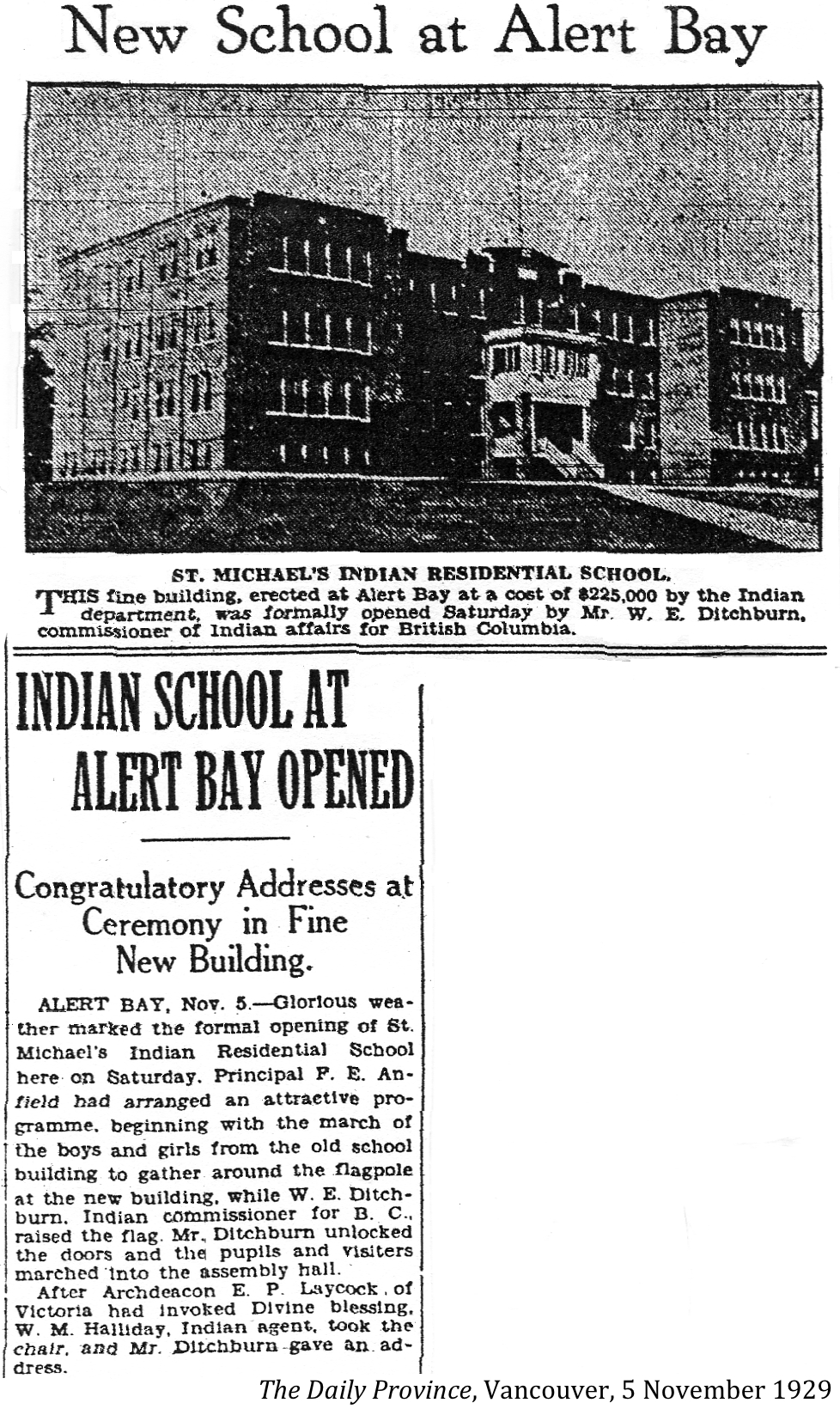
"Every Indian child between the full age of seven and sixteen years who is physically able shall attend such day, industrial or boarding school as may be designated by the Superintendant General for the full periods during which such school is open each year."
Section 10, Indian Act, Statutes of Canada, 1930
"The main reason for improvement in attendance at Indian schools is a growing conviction on the part of our wards that their children must be better fitted for the future. Fewer and fewer children are finding it possible to live by the chase and they are turning towards education to prepare themselves for encroaching civilization."
Duncan Campbell Scott, Report of the Department of Indian Affairs
for the year ending 31 March 1931.
"The Missionary and his sister shook hands with us and asked us to tea the same day. Louisa could not go, but I went.
The Missionary said, "It is good for the Indians to have a white person stay in their homes; we are at a very difficult stage with them––this passing from old ways into new. I tell you savages were easier to handle than their half-civilized people . . . in fact it is impossible . . . I have sent my wife and children south . . ."
"Is the school here not good?"
"I can't have my children mix with the Indians."
A long pause, then, "I want to ask you to try to use your influence with Louisa and her husband to send their boys to the Industrial boarding-school for Indians. Will you do so?" asked the Parson.
"No."
The Missionary's eyes and his sister's glared at me through their spectacles like fish eyes.
"Why will you not?"
"In Louisa's house now there is an adopted child, a lazy, detestable boy, the product of an Indian Industrial School, ashamed of his Indian heritage. All Louisa's large family of children are dead, all but these two boys, and they are not robust. Louisa knows how to look after them––there is a school in the village. She can send them there and own and mother them during their short lives. Why should she give up her boys?"
"But the advantages?"
"And the disadvantages!"
Louisa and I sat by the kitchen stove. Joe, her younger son, had thrown himself across her lap to lull a toothache; his cheeks were thin and too pink. Louisa said, "The Missionary wants us to send our boys away to school."
"Are you going to?"
"––Maybe Jimmy by and by––he is strong and very bright, not this one––."
" I never saw brighter eyes than your Joe has."
Louisa clutched the boy tight. "Don't tell me that. They say shiny eyes and pink cheeks mean–– . . . If he was your boy, Em'ly, would you send him away to school?"
"NO."
Emily Carr, "Friends," Klee Wyck, 1941
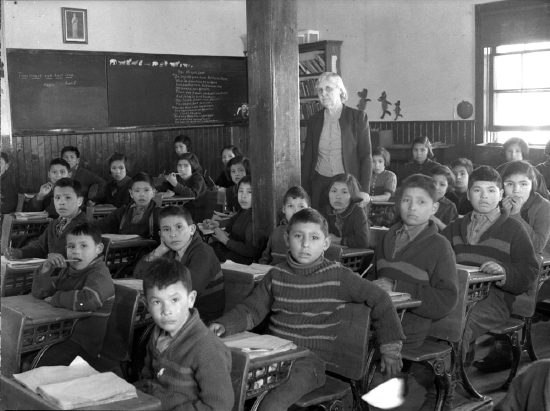
Thou Shalt Tell Lies," Cree students attending the Anglican-run Lac la Rouge Mission school in La Rouge, March 1945, NFB of Canada, PA-134110
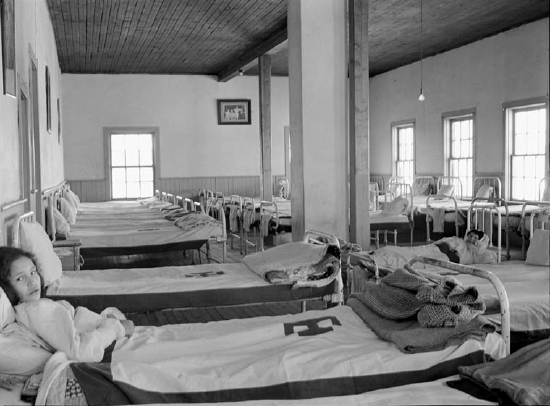
Two Cree girls in their beds in the girls' dormitory at All Saints Indian Residential School, Lac La Ronge, Saskatchewan, March 1945. LAC PA-166582, NFB, Bud Glunz
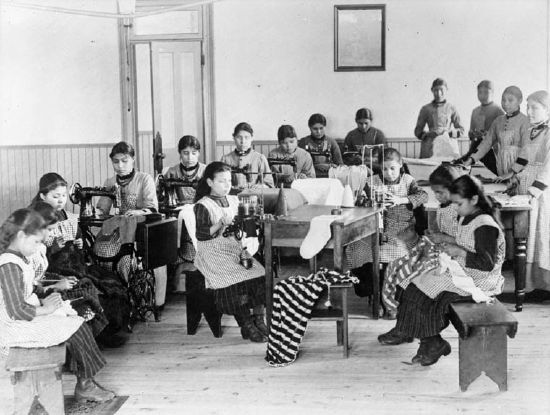
Canada; Dept. of Mines and Technical Surveys, LAC, PA-023095
Canada; Dept. of Mines and Technical Surveys, LAC, PA-023095
"I feel and have always felt that our administration of the affairs of Indians forms one of the sad and sorry pages in our Canadian history . . . Our treatment of Indians in Canada constitutes a brutal and unwarranted repudiation of every sentiment that is contained in the doctrine of the Golden rule."
Gerry McGeer, former MLA and MP, 1947
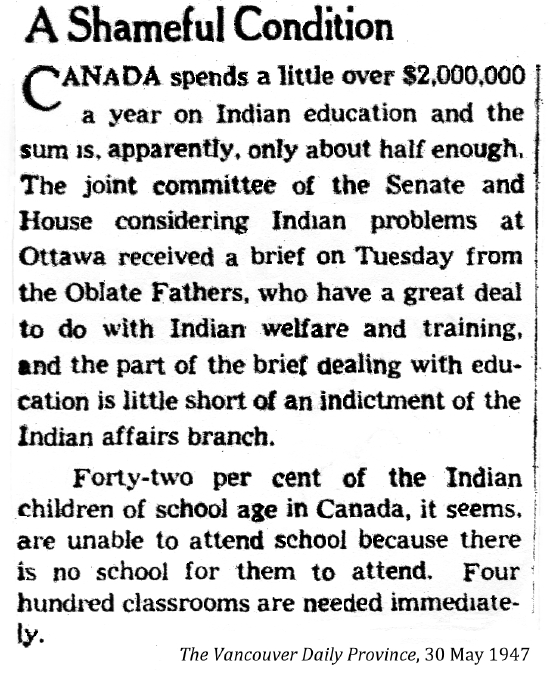 Gerry Gerry
Canada; Dept. of Mines and Technical Surveys, LAC, PA-023095
"I feel and have always felt that our administration of the affairs of Indians forms one of the sad and sorry pages in our Canadian history . . . Our treatment of Indians in Canada constitutes a brutal and unwarranted repudiation of every sentiment that is contained in the doctrine of the Golden rule."
"That education consisted of nothing that had any relationship to our homes and culture. Indeed Stoney culture was condemned explicitly and implicity. Our classes consisted of teachings in Protestant religion and ethics, the three Rs and European and Church history. From listening to these teachings it seemed to me that the only good people on earth were non-Indians and specifically white Christians. We were taught that the work and knowledge of our medicine men and women were of the Devil. We were taught that when people died they went to Heaven and walked streets paved with gold or to Hell and forever roasted in a lake of fire."
Chief John Snow, These Mountains Are Our Sacred Places
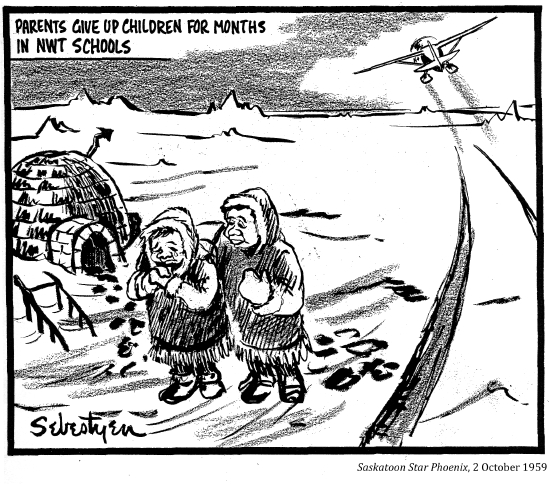
"Following right on the heels of hundreds of years of epidemics and dispossession of and, the residential school experience further ensured a sense of hopelessness and defeat. . . . Children suffered from emotional, physical and sexual abuse, loss of parental guidance and family life, forced labour, loss of language and culture, neglect, denial of proper education and inferior nutrition and health care. . . When these children finally left the schools, many were 'time bombs' waiting to explode. Many exploded inwardly in spasms of self-hatred or self-harm, and many committed suicide. Others used drugs and alcohol to try to bury what they wanted to forget. The violence in our communities is a result of unresolved destructive behaviours stemming from their childhood experience in the schools. Anger is still too prevalent."
Bev Sellars, Price Paid The Fight for First Nations Survival
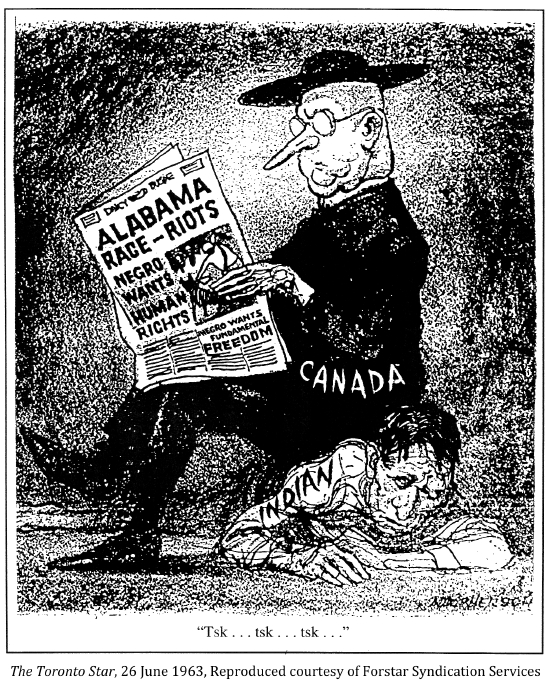
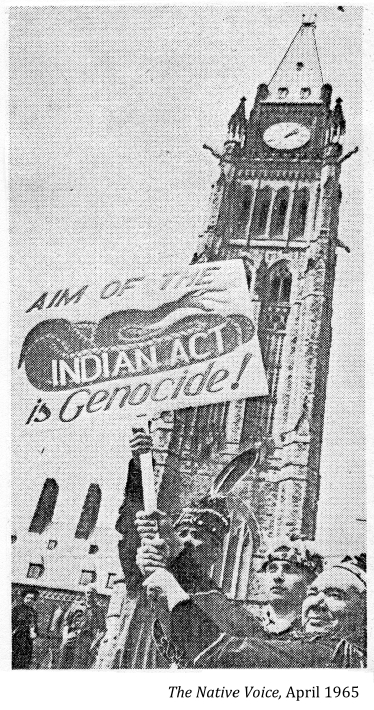
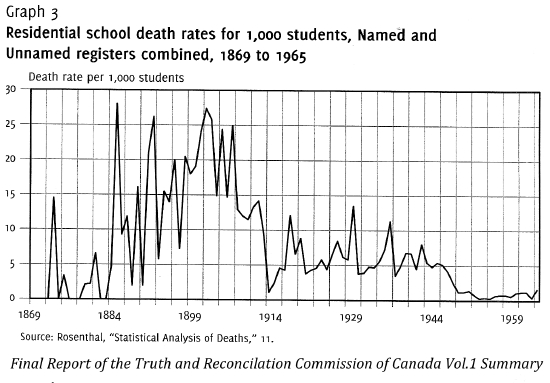
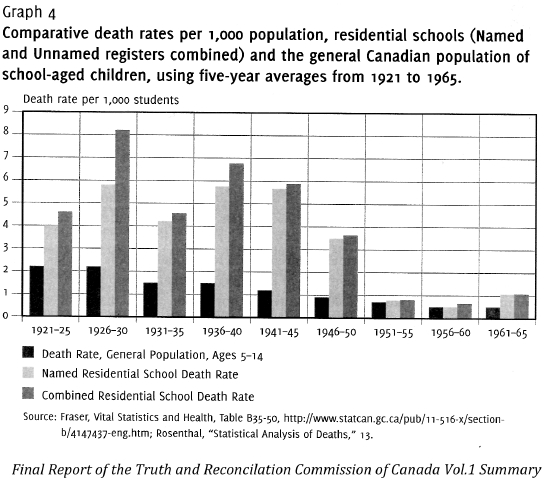
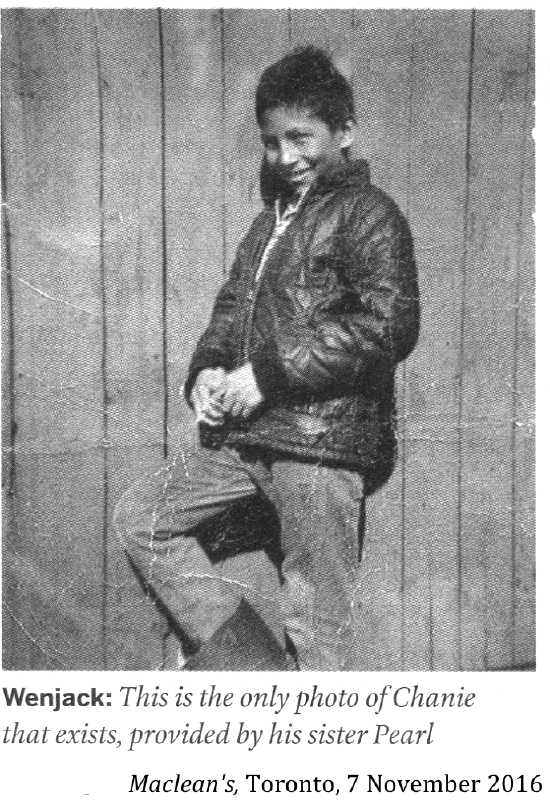
Chanie Wenjak froze to death when he ran away from a residential school in 1966.
"The Stranger Official Video" – Gord Downie – Secret Path
https://www.youtube.com/watch?v=za2VzjkwtFc
“The Stranger” is the first full chapter and song of The Secret Path. Adapted from Gord Downie’s album and Jeff Lemire’s graphic novel, The Secret Path chronicles the heartbreaking story of Chanie Wenjack’s residential school experience and subsequent death as he escapes and attempts to walk 600 km home to his family.
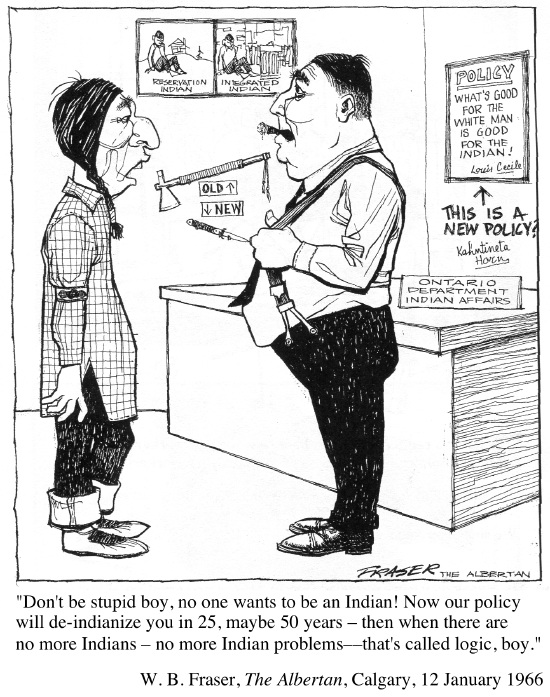
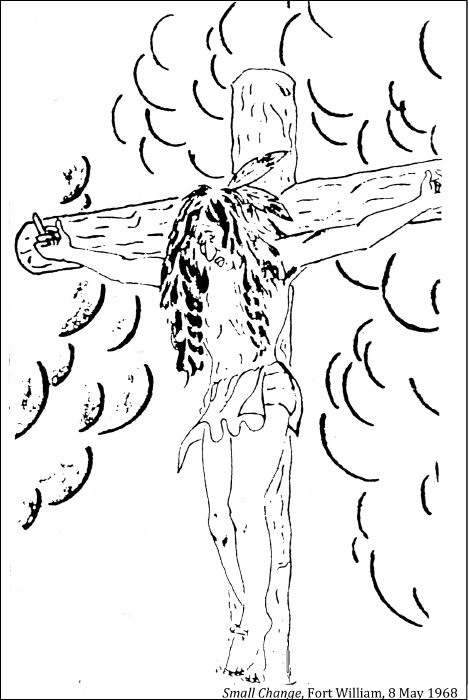
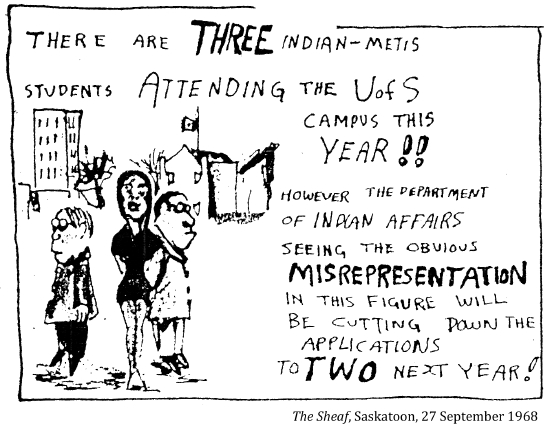
"The Canadian mosaic supposedly allows for the growth of different cultural groups as the basis for building a better Canada. The stronger the tiles within the mosaic, the stronger the mosaic as a whole. Before I can be a useful participating and contributing citizen I must be allowed to develop a sense of pride and consciousness of myself as an Indian. I must be allowed to be a red tile in the mosaic, not forced to become an unseen white tile."
Harold Cardinal
"The history of Canada was written by the oppressors, the invaders of this land. Their lies are perpetuated in the educational system of today. By failing to expose the true history of this decadent Canadian society, the schools facilitate our continued oppression. Therefore, we want an education that teaches us our true history and exposes the racist values of society."
NARP Eight Point Program, January- February 1969
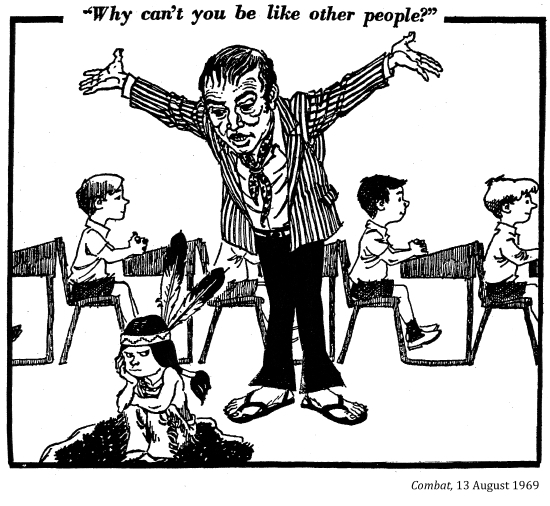
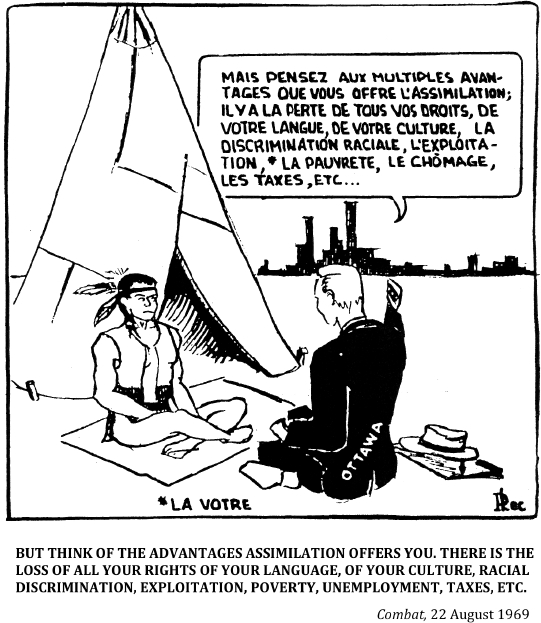
"The only good Indian is a non-Indian."
Harold Cardinal, The Unjust Society, 1969

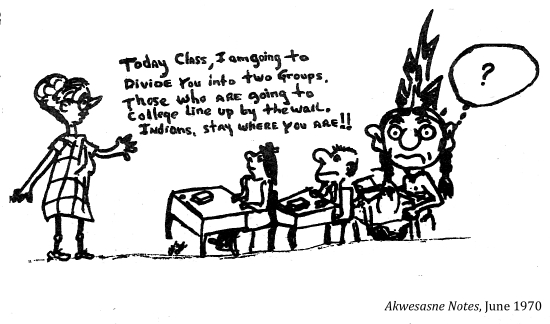
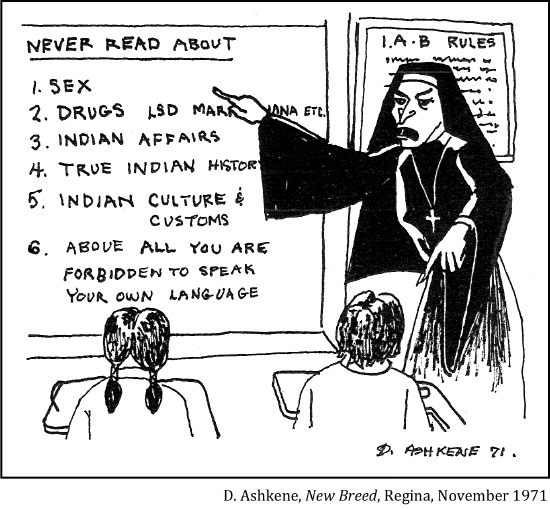
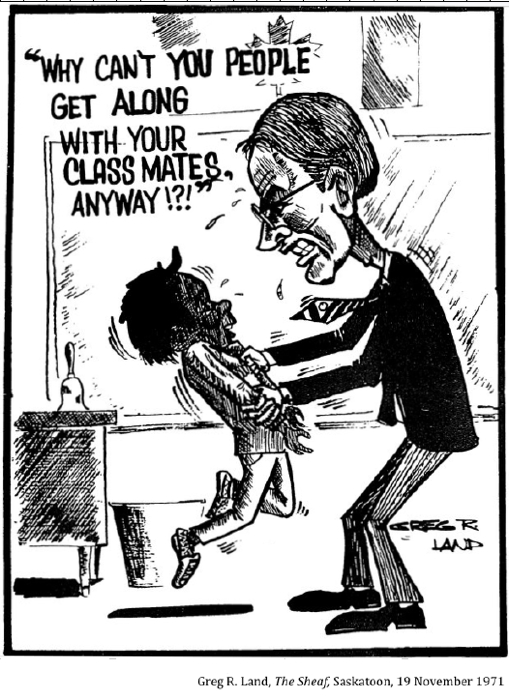

"[Issued a] call for Indian control and input into all facets of education affecting Indian people."
National Indian Brotherhood, Indian Control of Indian Education, 1972

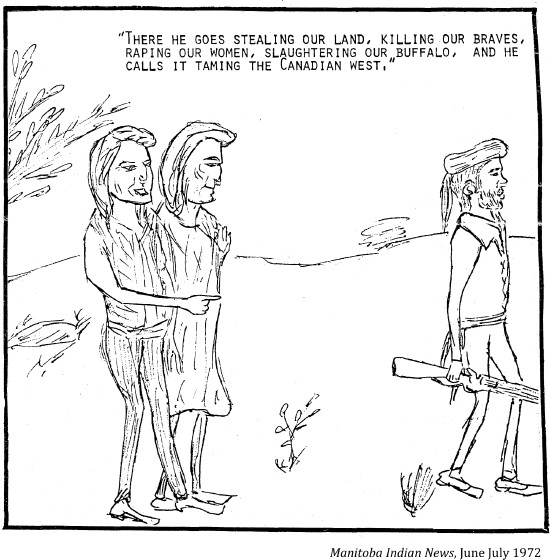
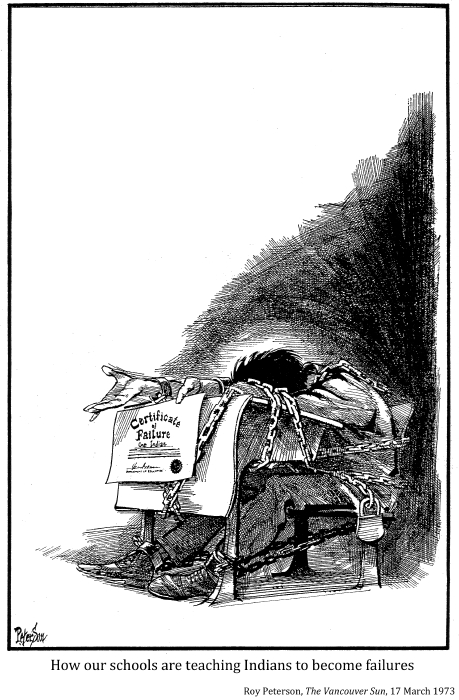
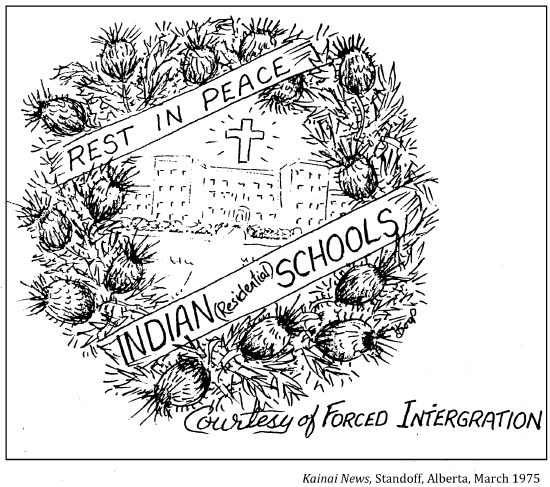
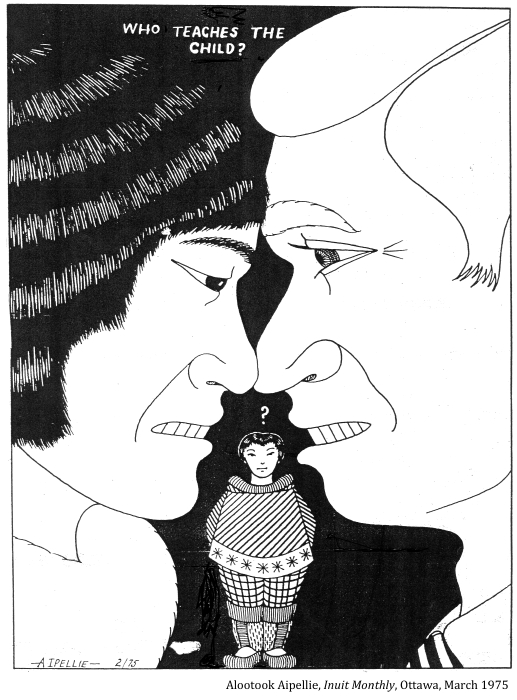
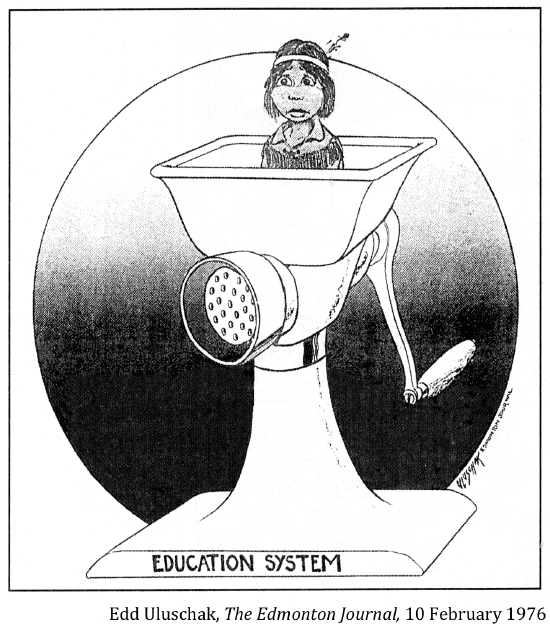

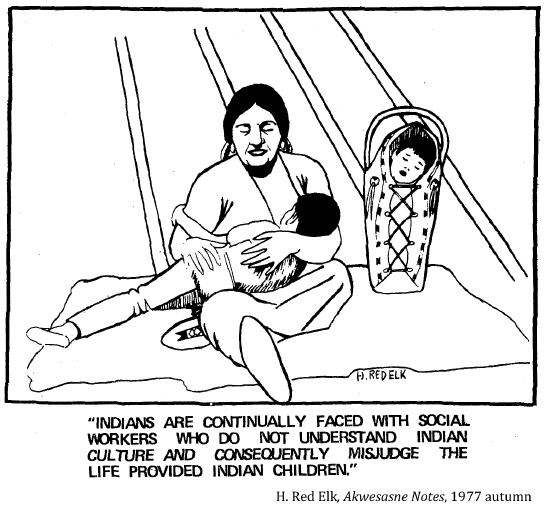

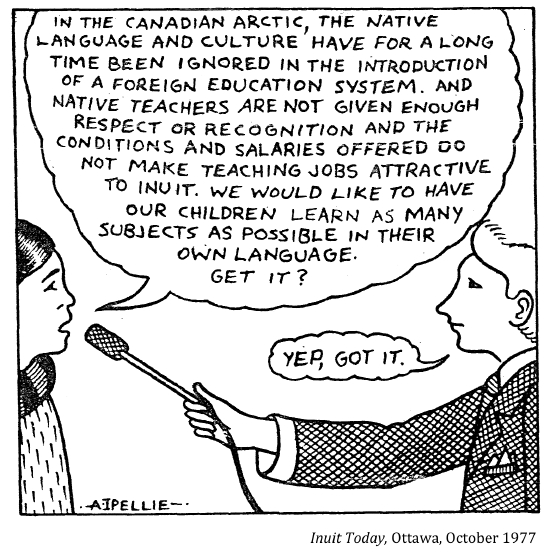
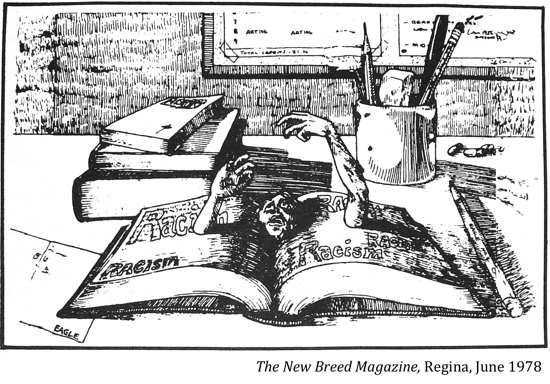

Micmac News, Sydney, November 1978
[A cartoon used to illustrate an article about the Shubenacadie Indian Residential School in Nova Scotia. The article uncovered evidence of physical and sexual abuse, meager food and cultural genocide in an institution run like a prison.]
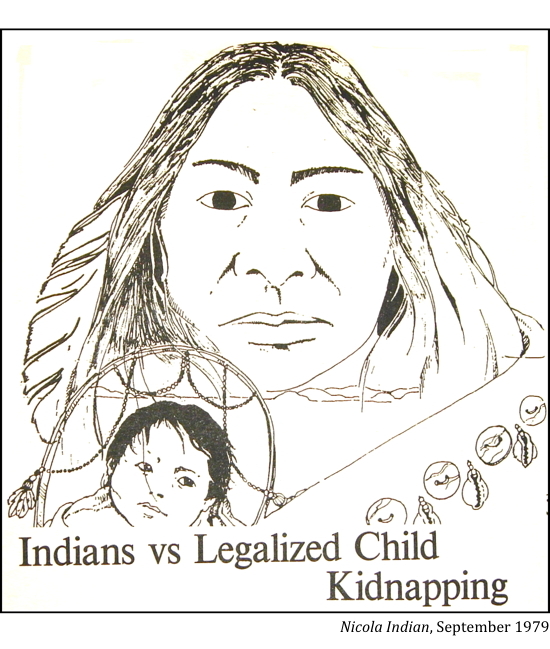

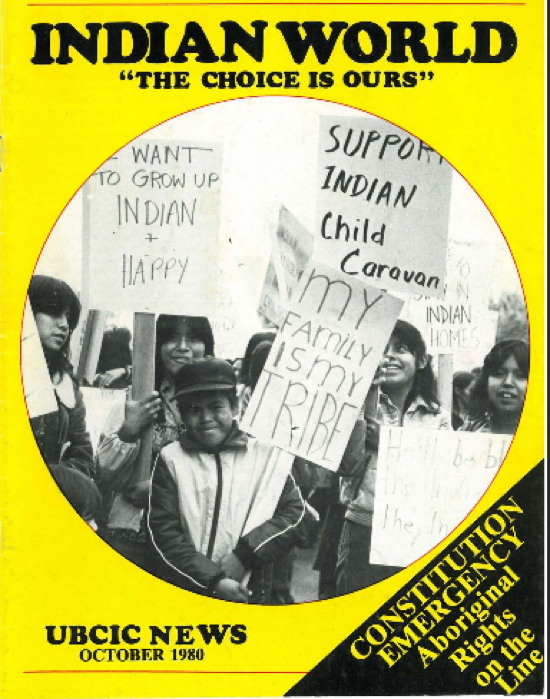
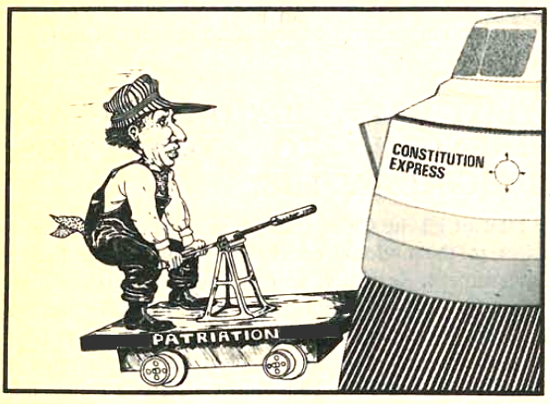
[The Constitution Express train trip from Vancouver to Ottawa protested the lack of aboriginal rights in the proposed constitution. Over 1000 people took the train to Ottawa. Nov. 1980]
https://indigenousfoundations.arts.ubc.ca/constitution_express/
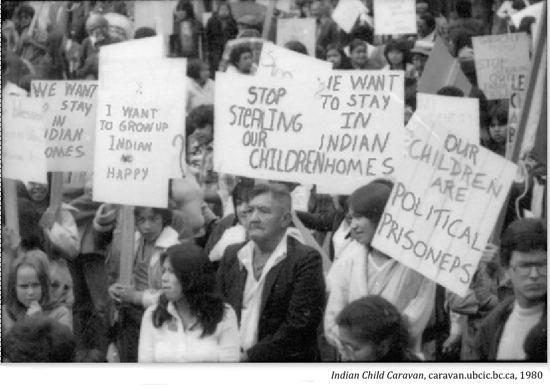
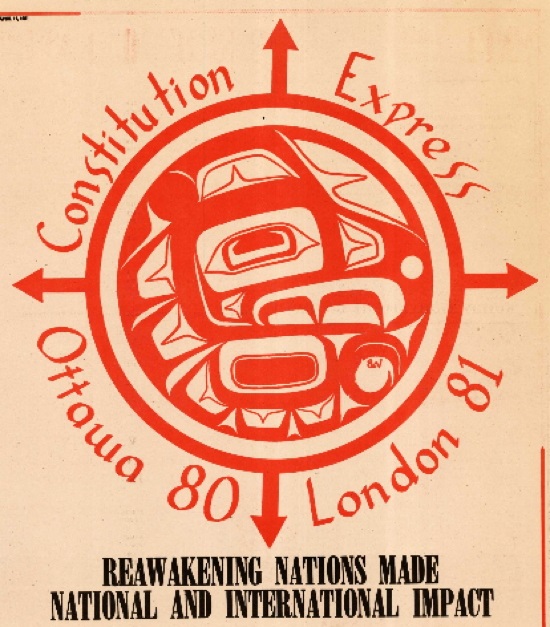
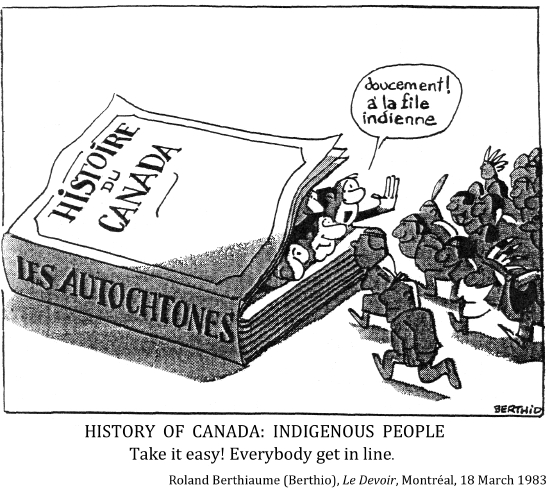
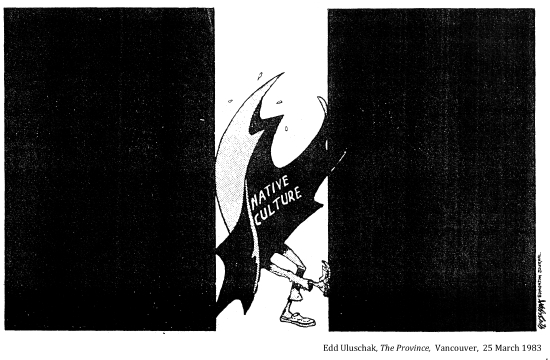
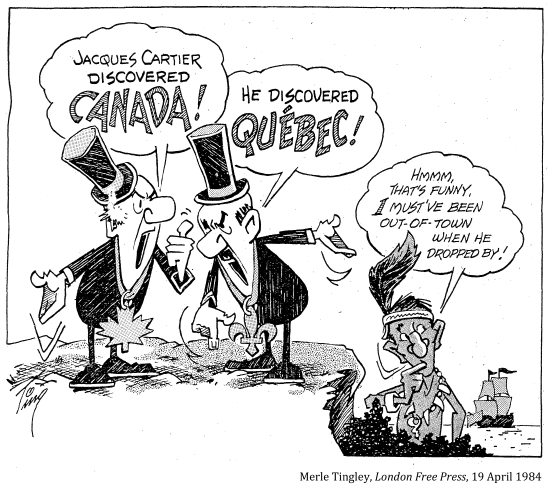
[Truly and Humbly: Memories of the first apology
The history of the United Church apology] (the first church to apologize for residential schools in 1986)
http://www.manitoulearningcommunity.com/truly-and-humbly-memories-of-the-first-apology/
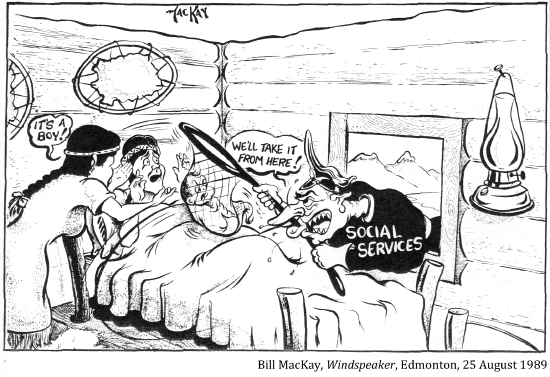
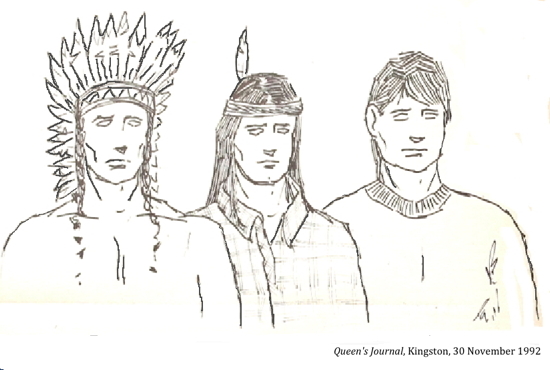
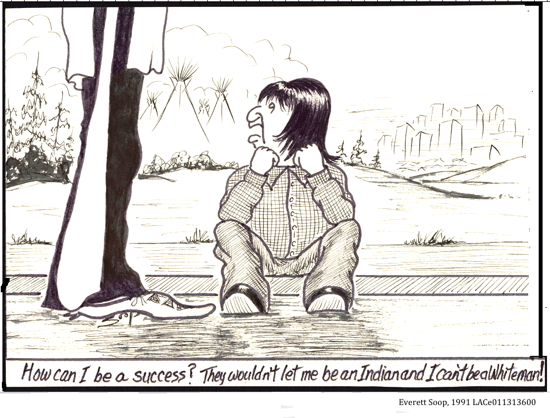
"Being aware of the problem and where it originates from is the first step to recovery. We have been forced to deal with the residential school issues and we now know that all the suicides, the alcoholism, the very low self esteem of our people, the sexual abuse, the loss of our language and culture, the family breakdown, the dependency on others, the loss of pride, the loss of parental skills, and all the other social problems that have plagued our people can be traced directly back to the schools."
Chief Bev Sellars, Soda Creek First Nation, 18 June 1991
[Elizabeth Furniss, Victims of Benevolence, p.126]
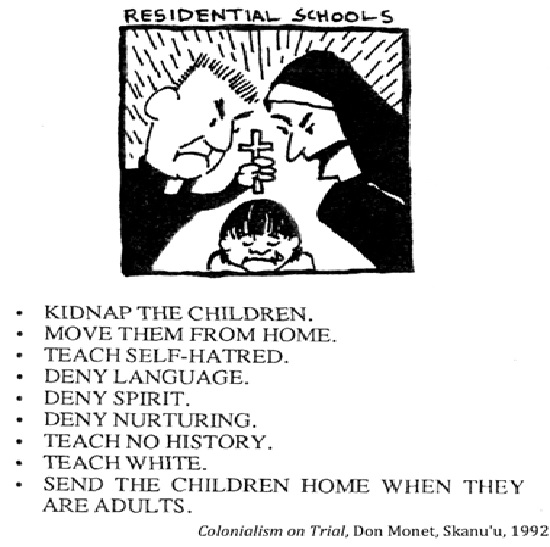
"As a retired United Church minister who worked for native people in B.C., Manitoba and Quebec, I, too, would like to apologize:
I apologize for teaching native children to read and write.
I apologize for showing native children how to carve totems.
I apologize for helping native children learn basketball.
I apologize for driving native children to basketball games.
I apologize for giving help, money and clothes.
I apologize for sharing years of my wife's talents and mine.
I apologize for learning to read and write a native language.
I apologize for loving native adults and children.
I apolotize for driving behind a dog train in the freezing north to take love, news and books to the adults, and sweets to the children.
I apologize for sharing Jesus Christ with the native population – if all these acts were in error."
Rev. A. I. Avery, British Columbia Report, 30 My 1994.
"Generations of children were wrenched from their families and were brought up to be ashamed to be Indians."
BC Supreme Court Justice Douglas Hogarth, Port Alberni, 1995
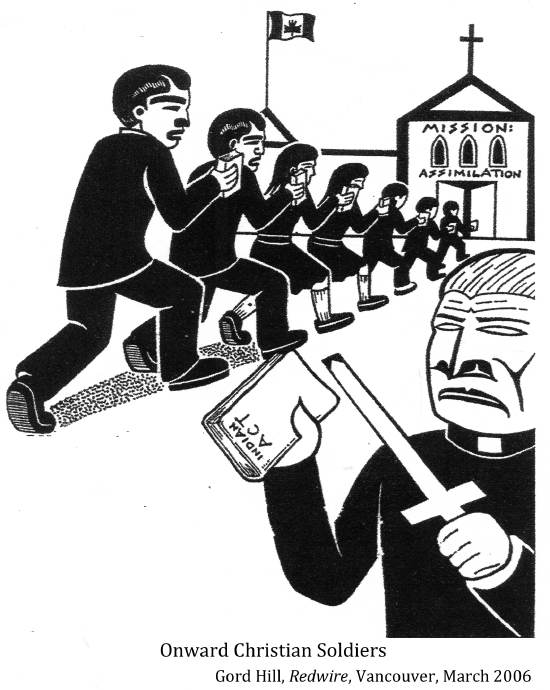
"For over a century central goals of Canada's Aboriginal policy were to eliminate Aboriginal governments; ignore Aboriginal rights; terminate the Treaties; and through a process of assimilation, cause Aboriginal peoples to cease to exist as distinct legal, social, cultural, religious and racial entities in Canada. . . [Residential schools] were a central element of this policy, which can best be described as 'cultural genocide.'"
Final Report, Truth and Reconciliation Report
Prime Minister Harper offers full apology on behalf of Canadians for the Indian Residential Schools system
" For more than a century, Indian Residential Schools separated over 150,000 Aboriginal children from their families and communities. In the 1870's, the federal government, partly in order to meet its obligation to educate Aboriginal children, began to play a role in the development and administration of these schools. Two primary objectives of the Residential Schools system were to remove and isolate children from the influence of their homes, families, traditions and cultures, and to assimilate them into the dominant cultures. These objectives were based on the assumption Aboriginal cultures and spiritual beliefs were inferior and unequal. Indeed, some sought, as it was infamously said, "to kill the Indian in the child." Today we recognize that this policy of assimilation was wrong, has caused great harm and has no place in our country. . .
The burden of this experience has been on your shoulders for far too long. The burden is properly ours as a Government, and as a country. There is no place in Canada for the attitudes that inspired the Indian Residential Schools system to ever prevail again. You have been working on recovering from this experience for a long time, and in a very real sense we are now joining you on this journey. The Government of Canada sincerely apologizes and asks the forgiveness of the Aboriginal peoples of this country for failing them so profoundly."
Stephen Harper, Ottawa, 11 June 2008


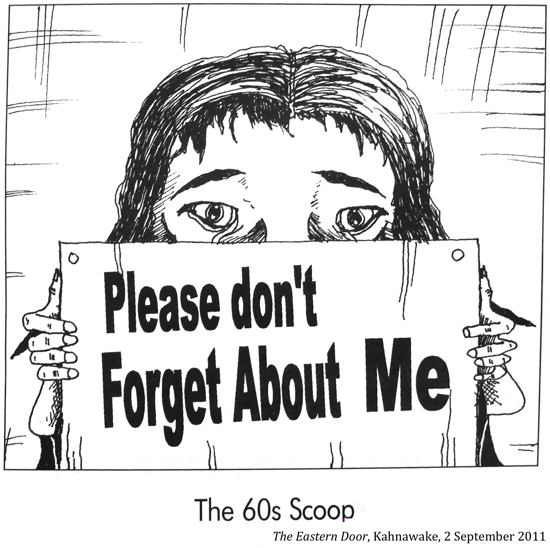

[John Duncan was the Minister of Aboriginal Affairs and Northern Development under the Stephen Harper government]
"Canada's Truth and Reconciliation Commission in June of 2015 . . . said, in part, that for over a century the central goals of Canada's policies were to eliminate Indigenous governments, ignore Indigenous rights, terminate treaties and through a process of assimilation, cause Indigenous Peoples to cease to exist as distinct legal, social, cultural, religious, and racial entities. The report stated that Indigenous Peoples experienced physical and cultural genocide."
Chief Robert Joseph, Namwayut
"We must reinstall a national narrative built upon the centrality of the Aboriginal peoples' past, present and future. And the policies of the country must reflect that centrality, both conceptually and financially."
John Ralston Saul, The Comeback, 2014
"Former staff and the children of former staff members have expressed the view that much of the discussion of the history of residential schools has overlooked both the positive intent with which many staff members approached their work, and the positive accomplishments of the school system. Although they certainly believed the system was underfunded, they also believed that they and their parents devoted much of their lives to educating and caring for Aboriginal children. . . For the most part, the school staff members were not responsible for the policies that separated children from their parents and lodged them in inadequate and underfunded facilities. In fact, many staff members spent much of their time and energy attempting to humanize a harsh and destructive system."
Final Report of the Truth and Reconciliation Commission of Canada, Volume 1, 2015
"The legacy from the schools and the political and legal policies and mechanisms surrounding their history continue to this day. This is reflected in the significant educational, income, health, and social disparities between Aboriginal and other Canadians. . . The impacts of the legacy of residential schools have not ended with those who attended the schools. They affected the Survivors partners, their children, their grandchildren, their extended families, and their communities."
Final Report of the Truth and Reconciliation Commission of Canada, Volume 1, 2015
"It is clear that even by the standards of the period in wih they operated, residential schools failed to provide students with an adequate education and the provincial vocational training."
Truth and Reconciliation Commission, 2015
"Many of our people are very unhealthy and still suffer from postcolonial trauma, a result of the residential school experience, the establishment of a reserve system, government-defined citizenship, historical racism, and the marginalization of our economies."
Jody Wilson-Raybould, From Where I Stand, 2019
"If we can teach French students in French, recognizing the importance of their language and culture to their identity, why can't we do the same with Indigenous kids? Language = culture . . . values, belief, traditions, ways of living."
David A. Robertson
https://www.kentmonkman.com/painting/2018/8/7/the-scoop
https://www.kentmonkman.com/painting/2017/1/20/the-scream
https://www.kentmonkman.com/painting/2017/3/7/a-mothers-grief
https://www.kentmonkman.com/painting/byrxitbo2e242c2lzit9fcy900y5xf
"Those of us from residential schools were mentally crippled by the experience and clueless about what we were or were supposed to be. Most survivors left school in their teens or early 20s, and most didn't live long. They were trapped at age seven or slightly older in psychological, emotional and spiritual age. For many, it was difficult or impossible to recover. . . Almost all former students suffered from their experience. Many died early and tragically."
Theodore Fontaine, Broken Circle The Dark Legacy of Indian Residential Schools A Memoir, 2022
"How could citizen from 'the true north strong and free' possibly allow prime minister after prime minister (and don't forget the pope), to oversee the perpetuation of this systematic cultural genocide on thousands of Native kids? It was a national crime, a human rights violation, and government cover-up at the highest level. . . I take a very personal interest in how the Canadian and American governments legalized the tormenting, abuse, and killing of Native children. This legislation caused intergenerational grief, alcoholism, hatred, mistrust, and community and family breakdown in Native communities across the continent, which persists to this day. . . I run out of fingers when I count my family members and close relatives who became alcoholics, committed suicide, or have done serious jail time. What kind of a people, what kind of a country, could allow this?"
Chief Clarence Louie, Rez Rules
"On April 12, 1876, the Indian Act was introduced to deliberately eradicate First Nations' cultures in favour of assimilation with colonizers. . .
[Residential schools] told me the same messages over and over again
You're no good.
You have no value.
You're just a pagan.
You cannot think for yourself.
God save the King.
God save the Queen.
Say your prayers.
Do the things we tell you to do.
Because that will make you better. . .
. . . the heart of the matter: racism, colonialism, fear and violence.
But We are more than driftwood. . .
There was no redeeming grace about taking little children away from their families, homes and communities; destroying their sense of pride and their language; and stripping them of the ability to have loving relationships with their parents and family. . . If you don't know who you are, how can you know where you came from and where you are going."
Chief Robert Joseph, Namwayut
"A great deal of evil in the world was and is caused by average people believing they are doing good, utterly convinced of the righteousness of their cause and blinded to the possibility of unintended consquences."
Stelphen R. Bown
|






























 Gerry
Gerry












































